Matej Lancaric is head of mobile marketing at Pixel Federation.
Every developer who thinks he doesn’t need to soft launch his game is simply wrong.
A successful soft launch is the best way to optimise your game for global launch. Soft-launching allows developers to collect data, identify bugs and receive early feedback from players.
Soft launch will provide you with the opportunity to test your server infrastructure and ensure it will be able to handle the load of a global launch.
For free-to-play games, and especially for those with in-app purchases, it is important to determine how well the game will do globally and if it has a good retention profile and monetisation mechanics.
Simply put, this will tell you if your game will be profitable and you should aim for global launch or simply kill it.
If you plan on looking for a publisher for your game, you should be aware that many publishers will look for some soft launch data before committing to any sort of monetary guarantee. Therefore, doing your own soft launch is highly recommended, as it will put you in a much better position during negotiations.
What is the point of releasing a new game or app to a restricted audience market in advance of a full launch?
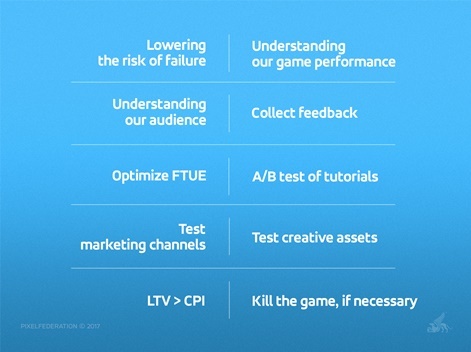

Pre-soft launch activities
Market research
Market research is the process of looking at the game market with numbers, facts and opinions. It’s about finding the equation between what people want and what you want to do.
It will provide you insights about what people like to play nowadays, what you can produce and why people would buy your game. Tonnes of people have done market research and failed tremendously. That’s totally fine.
This step will give you ideas about what you can expect while making your game. You’ll discover core challenges you’ll encounter in production and marketing.
We hadn’t done any market research in our past. We didn’t pay attention, mostly because our games are old and designed to destop/canvas, and then we were porting them to mobile, which is a totally different situation than when you are developing a mobile-first game. The most crucial part of development starts at the very beginning.
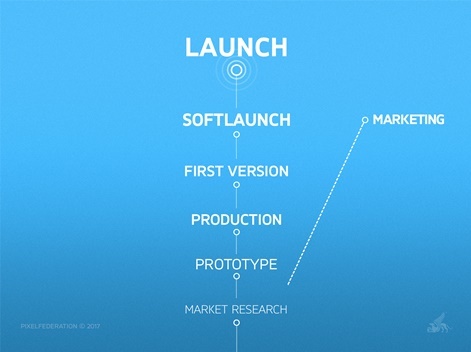
Researching key players in your game’s category can give you some great insights into what your target audience values in a game. How are other apps/games named? Are they memorable? Which categories are they targeting? Which keywords are they ranking high for? Who wants to play this kind of game? Are there a lot of these people? Do they have disposable income? Are they competitive or social?
An analysis could prove to be very useful in getting your game in front of the right audience.
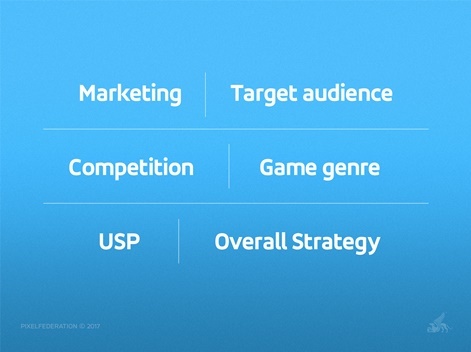
Target audience
It can be easy to think that people who play games belong to one of two groups – hardcore gamers living and breathing complex, highly skilled titles and playing them for four hours a day, and casual gamers playing low skill, non-challenging titles playing them for 20 minuts a day.
These extreme cases are also associated with a range of demographic assumptions and stereotypes, like hardcore gamers being young and male, and casual gamers being old and female. The reality is a majority of players fall somewhere between these two extremes along the game playing spectrum.
Take player differences into account when designing your game or adding new features:
- Be specific: Is this feature for a certain segment of players, or all players in general?
- Be informed: Get feedback from the right segments of players.
- Be concrete: Articulate how a feature will change specific aspects of these players' experience, and why that is important to them.
You can read how to do market research on your own - here.
Theme testing
Not many developers are aware of testing creative aspects of the game. Space Ape Games tested the name tagline of its Transformers title using Facebook Ads. With three fan pages they used the same creatives, but different game titles. Based on final results, they picked the right name.
At Pixel Federation we tested the visual theme of an upcoming match-three game. We used Facebook Ads and SplitMetrics to measure both the ad's click-through rate (CTR) and the store conversion.
The winning concept called Button Blast reached a one per cent better CTR. In terms of conversion rate it won with 25 per cent, by far ahead of the second concept Music Match with 17.5 per cent and the remaining two below 12 per cent.
The main KPI here was CTR, because conversion rate can be influenced and improved by a proper app store optimisation strategy.
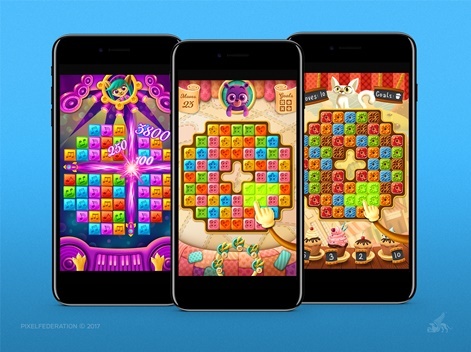
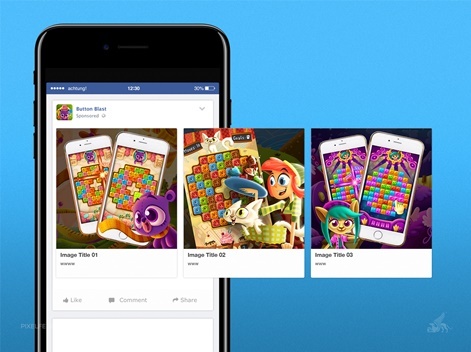
Soft launch strategy
Where?
A successful soft launch is the best way to optimise your mobile game for global launch. Devs could save money and time by receiving early feedback from players. In order to discover what country could be the best fit for game devs, what are the criteria to look for?
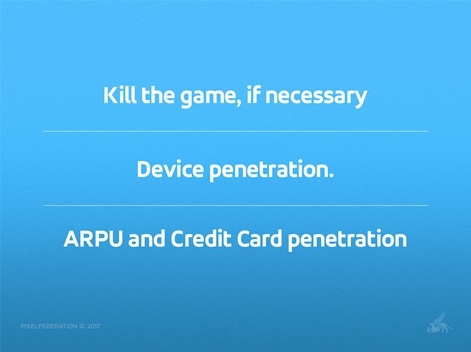
How we did it for our Button Blast?
There was a wide range of different countries that seemed quite suitable for a soft launch. We’ve chosen four(ish) countries – Philippines, Denmark, Australia, United Kingdom (+ Singapore as a APAC test in the later stage) for testing our new match-three puzzle game.
We have only one localisation in the game, which surprisingly is English. Therefore we needed a mostly English-speaking audience with decent Android devices and online payment penetration and appropriate CPIs.
So why Philippines, which is now used in half of all soft launch campaigns? The CPI is lower than $0.5 and we used it for technical test. We wanted to check if tracking is 100 per cent working, find bugs and bottlenecks.
English is also the second official language in the country and the percentage of people who speak English is even higher than in Nordic countries: 92,58 per cent.
Traditionally, Southeast Asian countries are dominated by Android devices. I am glad we did this “tech test” because we discovered a couple of mistakes in the setup of Appsflyer tracking and our own BI system. Data we were able to gather helped us do the rebalancing of first levels to improve the first-time user experience and onboarding.
The game's economy and monetisation model must be effective and profitable to go global. By now, we've proven that our retention profile is solid, by measuring and refining how well our game monetises, how many players convert to payers, at what stage they convert and how much they spend.
For this stage we wanted to collect KPIs that are going to be representative of a full global launch, so it's important to select territories that are economically similar to your eventual target market, which usually means a higher CPI.
Nordic countries show an exceptional number of people who speak English (about 85 per cent). Although there is only around 25 per cent Android penetration, our own data shows great monetisation potential, plus great use of credit cards and completing online payments.
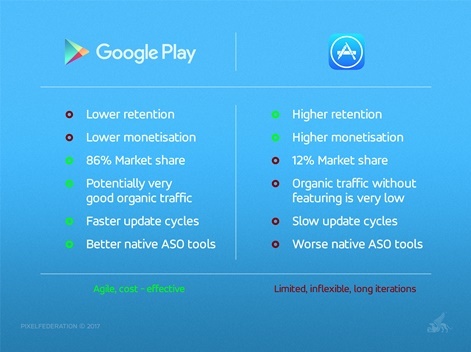
The thing you always want to do is to soft launch the Android version of your game. Mainly because of the flexibility you get when updating your game. Though nowadays iOS is more flexible, you still want to only wait couple of hours rather than couple of days.
Dos and don'ts
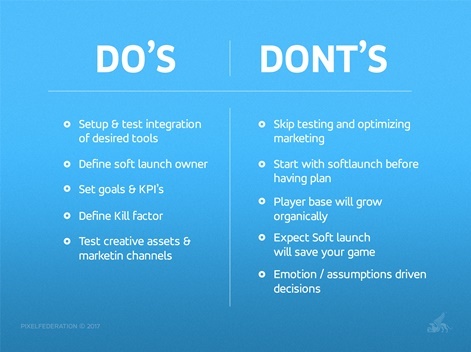
KPIs
When it comes to creating a mobile game soft launch strategy, you should first have a clear understanding of your objectives. You should align your objectives with your KPIs before diving headfirst into a plan of action.
One way to setup your KPIs and expectations is to talk to different experts from the games industry. They know what to expect and have extensive experiences. Then of course you could use tools like App Annie or Priori Data to set up benchmarks and KPIs.
The other way is to use data you already have. We looked at numbers of our a mobile game TrainStation, which has already been released. We compared platforms and their performance and saw relative uplift, which we included into the setup of Diggy’s Adventure KPIs.
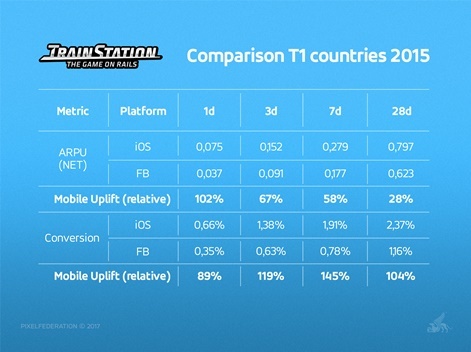
What you should do depends on your situation. We used both ways. For Button Blast we approached Adam Telfer and Tom Kinniburgh from MobileFreeToPlay who helped us set up our KPIs. They also evaluated our soft launch and development processes.
Strategy
There is no optimal strategy for everybody, but let’s take a look at our framework.
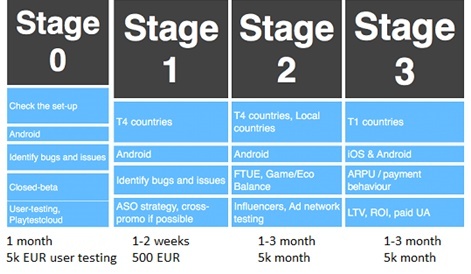
Iterations
The Build, Measure, Learn loop is a product development principle that emphasises speed of iteration as a key component in product development.
When using this principle, the goal is to release your game to market as soon as possible, measure its performance and then iterate based on user data, repeating the loop as often as required or is possible.
While this principle is not specific to the games industry, this is exactly the mindset that devs should adopt when soft-launching a new game.
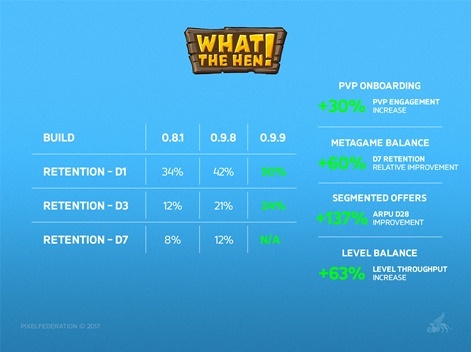
Many teams work within a fixed budget or timescale for soft launch. So the faster you can make updates and changes to your game, the more information you will collect. You'll learn more about your players and your game will become better and better through each iteration.

In many cases, it is also not obvious what specific change will cause the biggest swing in KPIs, so it's important to give yourself as many chances to iterate as possible.
The trick is creating a simple excel sheet with the list of KPIs you want to measure, the build version and a changelog with comments. This way you will be able to identify every change you made and its impact.
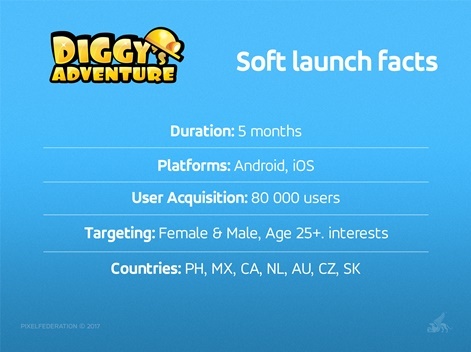
Analytics
All developers should approach soft launch with an open mind. During any soft launch it's vital that personal bias is removed and data alone is used to determine what is and isn't working.
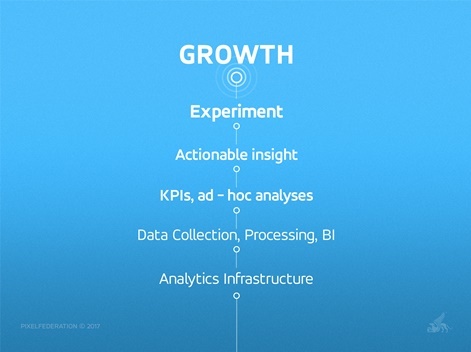
It's crucial that before you start bringing players into your game you are collecting information that will allow you to make good decisions further down the line. There are many game-specific metrics you should collect that will help you answer the important questions, including:
The FTUE (first-time user experience) funnel
How many first sessions are going according to your expectations? Are players making it through the tutorial? Are they playing long enough to engage with the game's core mechanics?
Player progression
How quickly are players progressing through your game? Are they finishing levels too quickly? Are they becoming bored at some point, or are players hitting an unexpected early pinch-point and leaving after becoming frustrated? How many moves dp players need to beat a level? What are the number of players who played the level?
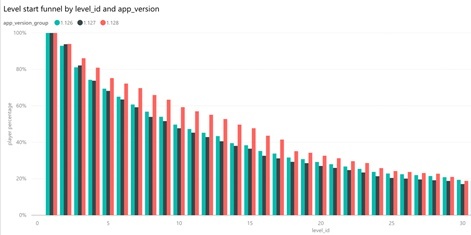
Monetisation
After what specific action do players make a purchase? How far have players progressed in the game before purchasing? What is the average time to purchase?
It's very important that you have enough information on player behaviour to make a decision and changes to your game. The main goal is to be able to identify what causes poor KPIs as well measuring the actual KPIs themselves.
As well as making sure you are collecting the right data, you should also have a plan for analysing your data so you can get the answers you need quickly
App store optimisation (ASO)
Soft-launching is a good opportunity to see if your app store pages are well optimised. App store optimisation should be a crucial part of your user acquisition strategy, so it’s important to get this right early on.
Soft launch is the stage where you can make sure you’ve got the most appealing app store pages possible. Test everything from the icon to the short description.
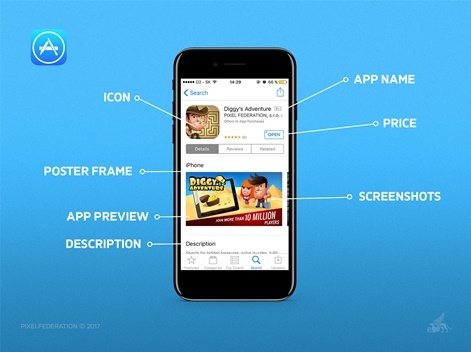
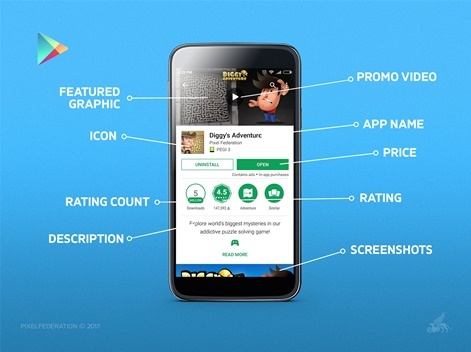
Marketing
Creatives
In mobile games marketing, the quality of the creative has historically been less relevant. Devs used to be able to get away with a few screen grabs and maybe some gameplay videos that one of their ad partners made. This is also changing. Testing various creative formats is a very important part of the soft launch process. You need to be sure which format performs best.
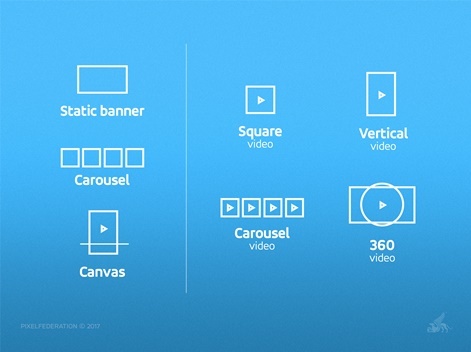
Creatives can be funny, dramatic and scary. They can stir emotions in your players and help them view your game as more than a disposable experience.
We’ve seen that the best-performing creatives are the ones that can elicit a reaction from the viewer, even if it’s a little ridiculous. No matter what kind of creative you use for your game, development and testing has also become more important.
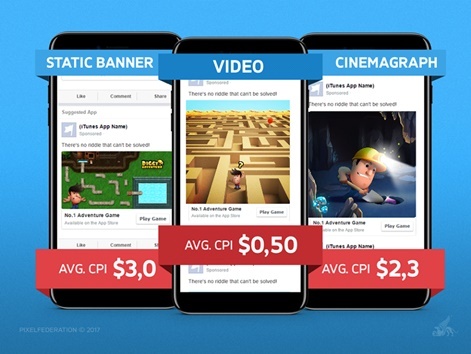
Channels
There are tonnes of ad networks out there to be tested during soft launch. Fortunately, we have reports like the Appsflyer Performance Index so we can choose our partners wisely. It depends on your resources, but you should test at least two to three ad networks to see their performance against your KPIs.
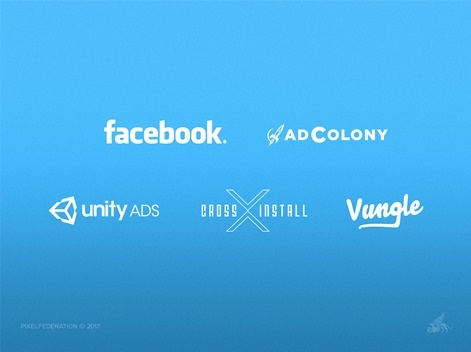
But beware! Each of them could have very much different results and you need to monitor them very closely.

Takeaways
Like Adam Telfer said during his talk at GDC 2016: soft launch will not save your game, but it might save your company.
You should keep this in mind. But if you do everything right, you can very much benefit from soft launch in the future. It’s best not to waste the time and money by launching a game that won’t recoup its investment.
Don't forget to check out PocketGamer.biz's soft launch list for the latest games in soft launch.
Get the latest news, interviews and in-depth analysis on Twitter, Facebook and our daily newsletter.





















